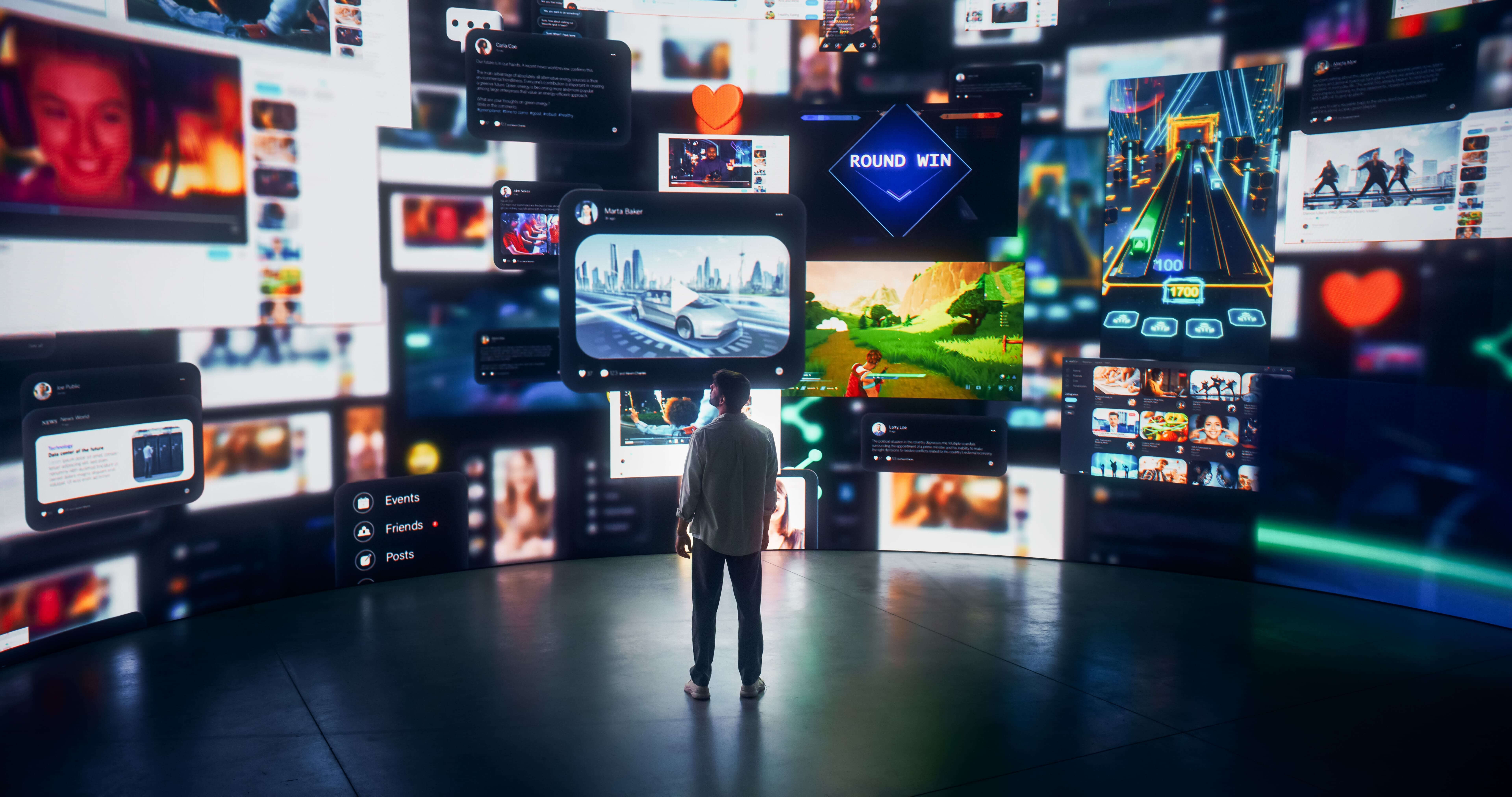In today's digital age, technology has revolutionized the way we interact with the world around us. Augmented Reality (AR) is one such groundbreaking technology that has transformed how we perceive reality, seamlessly blending the physical and digital realms. In this blog, we will explore the wonders of Augmented Reality, its applications, and how it enhances reality by providing immersive digital experiences.
Section 1: Understanding Augmented Reality
Augmented Reality, often abbreviated as AR, is an advanced technology that superimposes computer-generated content onto the user's real-world environment. Unlike Virtual Reality (VR), which creates a completely virtual world, AR enriches our perception of the physical world by adding interactive digital elements. The real-time fusion of virtual and real-world objects allows users to engage with both simultaneously, enhancing their overall experience.
Section 2: The Components of Augmented Reality
To better comprehend how AR works, it's essential to understand its fundamental components:
1. Hardware: AR experiences are delivered through various devices, including smartphones, tablets, smart glasses, and AR headsets. These devices use cameras, sensors, and processing units to overlay digital content onto the user's surroundings.
2. Software: AR applications require sophisticated software to detect, track, and recognize objects in the real world. Computer vision algorithms, Simultaneous Localization and Mapping (SLAM), and depth-sensing technologies are essential to ensure accurate digital object placement.
Section 3: Applications of Augmented Reality
AR has rapidly expanded into numerous industries, offering innovative solutions and enhancing user experiences:
1. Retail and E-Commerce: AR allows customers to visualize products in their real environment before making a purchase. Virtual try-ons, furniture placement simulations, and interactive shopping experiences elevate customer engagement and reduce return rates.
2. Education: Augmented Reality brings textbooks and educational materials to life, providing interactive and immersive learning experiences. Complex concepts become more understandable, and historical events can be reenacted, making education engaging and enjoyable.
3. Gaming and Entertainment: AR gaming apps, like Pokémon GO, have demonstrated the vast potential of AR in the gaming industry. Users can interact with digital characters and objects in the real world, transforming their surroundings into a virtual playground.
4. Architecture and Design: AR enables architects and interior designers to showcase their creations to clients in a 3D context. Virtual walk-throughs and spatial visualizations allow clients to experience proposed designs realistically.
5. Healthcare: From surgical training simulations to patient diagnosis and treatment planning, AR plays a significant role in enhancing medical practices. Surgeons can access real-time data and visualizations during procedures, leading to better outcomes.
Section 4: AR and Marketing
The integration of Augmented Reality in marketing campaigns has proven to be highly effective. Brands can create interactive and immersive advertisements, providing a memorable experience for their target audience. This innovative approach not only boosts engagement but also fosters brand loyalty and increases conversion rates.
Section 5: SEO Optimization for AR Content
Creating SEO-friendly content is crucial for improving your website's visibility in search engine rankings. Here are some tips for optimizing AR-related content:
1. Keyword Research: Conduct thorough keyword research to identify relevant and high-ranking keywords related to AR technology, applications, and industries.
2. Compelling Titles and Meta Descriptions: Craft attention-grabbing titles and meta descriptions that accurately describe the content and include targeted keywords.
3. Quality Content: Produce informative, well-researched, and engaging content that adds value to your readers. Longer-form content tends to perform better in search rankings.
4. Optimize Images and Videos: Compress and optimize images and videos related to AR to improve loading times and user experience, a crucial factor for SEO.
5. Internal and External Linking: Include internal links to related content on your website and seek opportunities for external links from reputable sources to improve your website's authority.
Conclusion:
Augmented Reality has opened up a world of possibilities, revolutionizing how we interact with technology and the physical world. From education to marketing, AR's impact is evident across various industries. Embrace this cutting-edge technology to enhance your user experiences, drive engagement, and stay ahead of the competition in today's digitally immersive landscape.
If you're looking to integrate AR into your business or marketing strategy, feel free to reach out to us at hello@radaragency.io. Our team of experts is ready to guide you through the exciting world of Augmented Reality.




